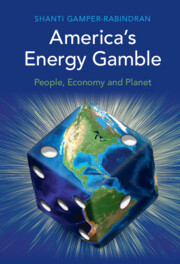Book contents
Part V - The Global Climate
Published online by Cambridge University Press: 06 January 2022
Summary

- Type
- Chapter
- Information
- America's Energy GamblePeople, Economy and Planet, pp. 413 - 462Publisher: Cambridge University PressPrint publication year: 2022

